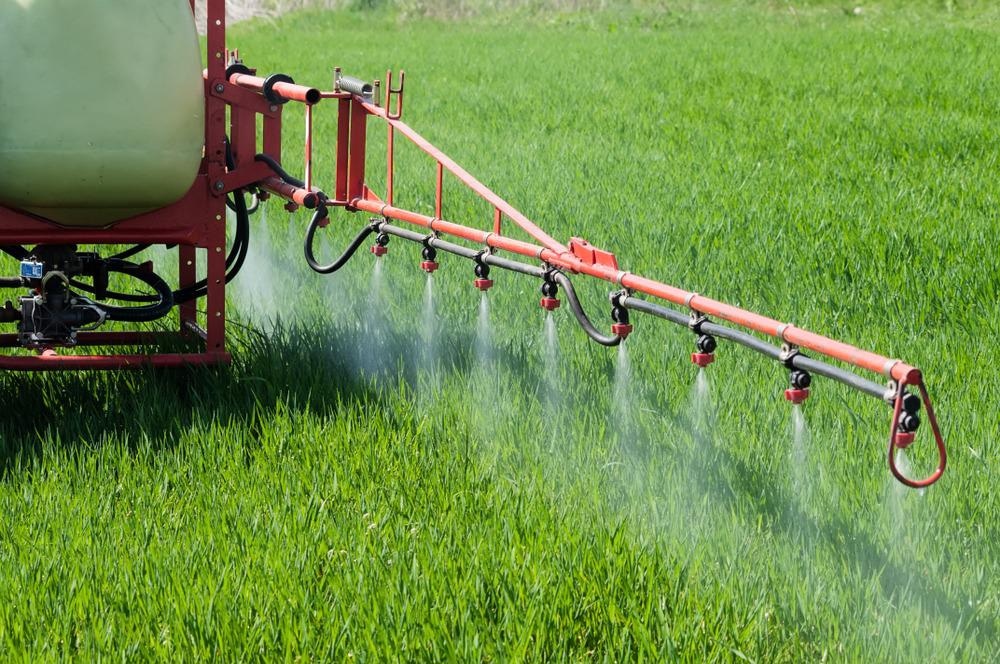Covalent Organic Frameworks (COFs) are materials that build two- or three-dimensional structures through robust covalent bonding, resulting in porous, resilient, and highly crystalline compounds. The development of a magnetic covalent organic framework based on graphene oxide (GO) for separating and extracting triazine herbicides from vegetables and fruit is the subject of a recent study published in the journal Analytica Chimica Acta.

Study: Magnetic graphene oxide−based covalent organic frameworks as novel adsorbent for extraction and separation of triazine herbicides from fruit and vegetable samples. Image Credit: Robert Avgustin/Shutterstock.com
Harmful Impacts and Detection Techniques of Triazine Herbicides (THs)
Triazine herbicide is a broad-spectrum herbicide having a triazine chemical composition used generally for weed control in crops such as sugarcane, field corn and grapes. It has a profound influence on the agricultural sector due to its cheap cost and adaptability.
Given the cytotoxic and harmful effects of triazine herbicides, detecting triazine herbicides in food samples has become an essential part of preserving both the ecosystem and public health. As a result, rapid, simple, and dependable analytical approaches for ensuring food safety are required.
Currently, the chromatographic technique paired with various sensors is used to determine pollutants and environmental toxins in food. To extract THs, a sample pre-treatment step is necessary. The precision and sensitivity of the analytical findings are greatly influenced by the correctness of this sample pre-treatment process.
Magnetic Solid-Phase Extraction (MSPE): A Novel Pre-Treatment Method
Magnetic solid-phase extraction (MSPE) is the most commonly explored and used sample pre-treatment technology due to its ease of use, high adsorption effectiveness, and cheap cost. These features eliminate the time-consuming and difficult stages of conventional approaches such as packaging and specimen loading.
Choosing adsorbent compounds with strong analyte adsorption capability in the MSPE process helps decrease matrix disruptions and increase analytical responsiveness and precision. Given the resource, expense, and chemical stability constraints, there is a pressing demand to create adsorbents with excellent adsorption capability, low expense, and time savings for the separation and enrichment of THs in heterogeneous food materials.
Covalent Organic Frameworks (COFs) as Absorbents for MSPE Process
Covalent organic frameworks (COFs) are an intriguing and new polymer with a permeable crystal lattice formed by covalent bond synthesis from organic linkers. The morphology of COFs is defined by the molecule structure, homogeneity, and attachment mode of the linkage.
COFs with clearly defined structure and excellent uniformity have refined physicochemical characteristics. COFs have attracted substantial interest in various domains as a suitable adsorbent for the specimen pre-treatment procedure due to the benefits of high surface area, strong structural integrity, and customizable pore volume, among others.
A Novel Magnetic COF based on Graphene Oxide (GO)
Graphene oxide (GO), a multilayer material made up of a honeycomb carbon lattice, has a high effective contact area and high solubility in water with hydroxyl, carboxylic, and epoxy polar functional groups. GO's oxygen-containing active groups can attach to analytes through dipole-dipole interactions, electrostatic attraction, and coordination techniques. GO has also been widely employed as an adsorbent in specimen preparation processes.
In this study, the researchers created unique magnetic COFs as adsorbent materials for the fast separation and isolation of five THs from complicated dietary samples. Under moderate circumstances, the adsorbent was created by mixing magnetic GO and COFs in a simple hydrothermal process.
COFs were created by combining aldehydes with amines, resulting in stable imine linkages, and GO was employed as a multifunctional alteration material to increase COF adsorption capability for THs. Using this adsorbent, a technique based on MSPE was developed, verified, and employed to identify five THs in food samples.
Key Findings of the Study
A series of characterization techniques affirmed the effective mixture of magnetic GO and COFs and the outstanding properties of the prepared magnetic composite materials, such as crystalline structure with a comparatively large selective interfacial area and elevated analyte adsorption ability.
Comprehensive MSPE refinement and verification studies demonstrated that the suggested technique could accurately and precisely analyze five THs in cucumber, celery, and apple. Furthermore, the adsorbent may be regenerated more than eight times without affecting its adsorption capability significantly.
This study indicated that a new magnetic oxide-based covalent organic framework could be employed as a viable MSPE adsorbent, with substantial potential for application to other pesticide studies.
Reference
Li, Y. et al. (2022). Magnetic graphene oxide−based covalent organic frameworks as novel adsorbent for extraction and separation of triazine herbicides from fruit and vegetable samples. Analytica Chimica Acta. Available at: https://www.sciencedirect.com/science/article/pii/S0003267022005554?via%3Dihub
Disclaimer: The views expressed here are those of the author expressed in their private capacity and do not necessarily represent the views of AZoM.com Limited T/A AZoNetwork the owner and operator of this website. This disclaimer forms part of the Terms and conditions of use of this website.